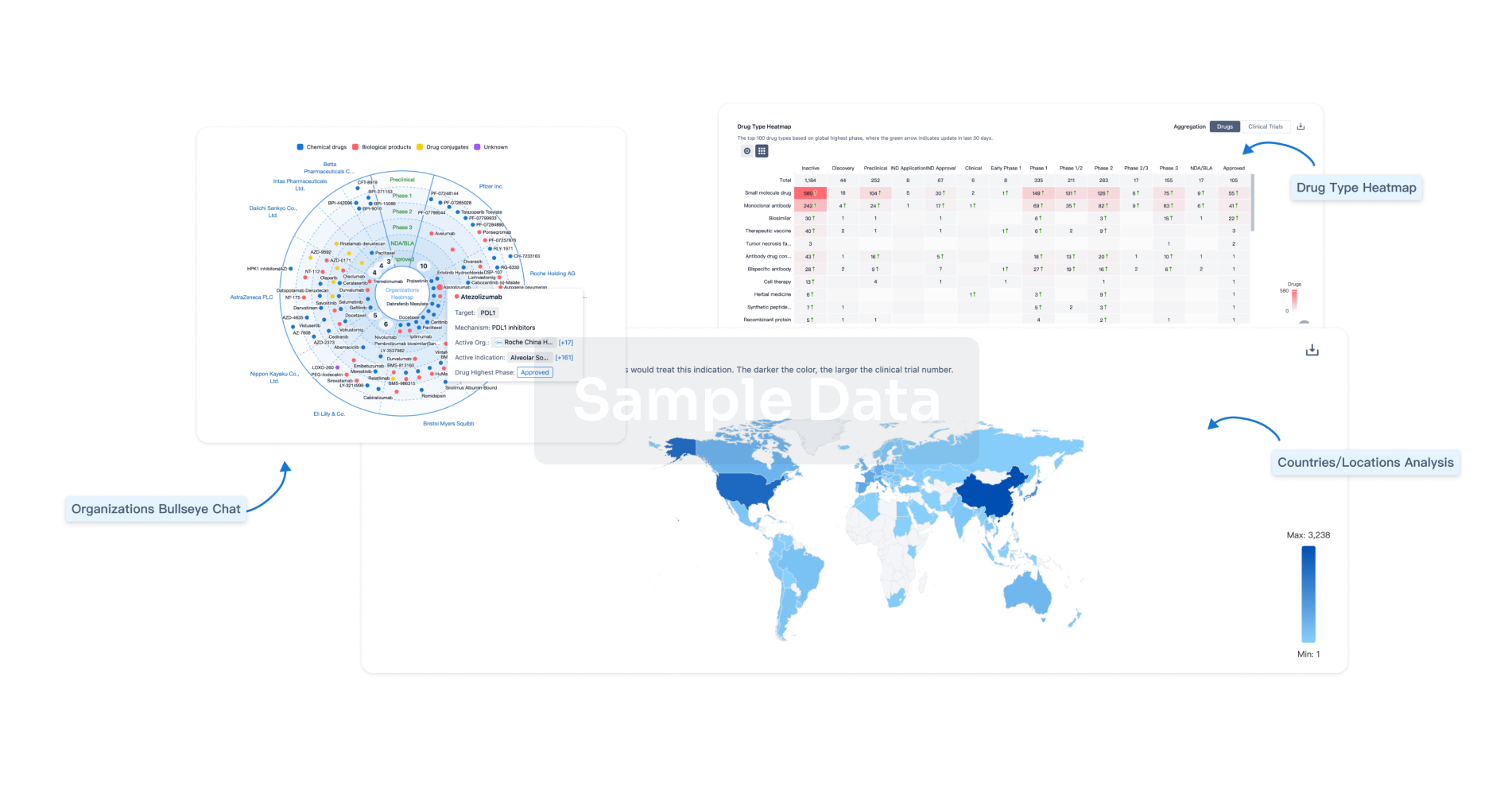Request Demo
Last update 08 May 2025
Osteogenesis Imperfecta, Type 3
Last update 08 May 2025
Basic Info
Synonyms OI type 3, OI, TYPE III, OI, type 3 Osteogenesis imperfecta, type 3 + [21] |
Introduction A type of osteogenesis imperfecta characterized by bone fractures, bone deformities, short stature, poor muscle development, barrel-shaped chest, and triangular face. |
Related
1
Drugs associated with Osteogenesis Imperfecta, Type 3Target |
Mechanism SOST inhibitors |
Active Org. |
Originator Org. |
Active Indication |
Inactive Indication |
Drug Highest PhasePhase 3 |
First Approval Ctry. / Loc.- |
First Approval Date20 Jan 1800 |
3
Clinical Trials associated with Osteogenesis Imperfecta, Type 3NCT05559801
A Phase 1/2 Study to Examine the Safety and Preliminary Efficacy of Mesenchymal Stromal Cells on Linear Growth and Bone Health Parameters in Children With Type 3 Osteogenesis Imperfecta (OI)
This is a Phase 1/2 study to determine the safety and efficacy of allogeneic (third party), bone-marrow derived mesenchymal stromal cells (MSCs) for the treatment of Osteogenesis Imperfecta (OI) Type 3. It will evaluate this by looking at whether there are treatment related infusion reactions, and assessing linear growth rates and bone health, both of which are impaired in patients ages 3-10 with Osteogenesis Imperfecta Type 3. This is a single-site non-randomized clinical trial, that will take place at Children's Healthcare of Atlanta (CHOA) at Egleston and Emory Children's Center.
Start Date01 Sep 2025 |
Sponsor / Collaborator |
NCT03118570
A Phase 2b, Multicentre, Multinational, Double-blind, Dose-finding Study, Incorporating an Open Label Substudy, in Adult Patients With Type I, III or IV Osteogenesis Imperfecta Treated With Setrusumab (BPS804)
The purpose of this study is to select a suitable dose of BPS804 by measuring the strength/quality of bone using a special type of CT scanner. Participants will be treated for 12 months and followed up for a further 12 months.
Start Date11 Sep 2017 |
Sponsor / Collaborator |
NCT01061099
A Pilot Study to Assess the Safety and Feasibility of Repeated Infusions of Mesenchymal Stromal Cells (MSC) in Children With Osteogenesis Imperfecta
This is a study to evaluate the safety and effectiveness of repeated Mesenchymal Stromal Cells (MSC) infusions to patients with Type II or III osteogenesis imperfecta (OI).
Participants will receive MSC infusions approximately every 4 months to complete a total of 6 infusions over 20 months. Participants will be followed for 4 months post their last MSC infusion.
Participants will receive MSC infusions approximately every 4 months to complete a total of 6 infusions over 20 months. Participants will be followed for 4 months post their last MSC infusion.
Start Date01 Feb 2010 |
Sponsor / Collaborator |
100 Clinical Results associated with Osteogenesis Imperfecta, Type 3
Login to view more data
100 Translational Medicine associated with Osteogenesis Imperfecta, Type 3
Login to view more data
0 Patents (Medical) associated with Osteogenesis Imperfecta, Type 3
Login to view more data
266
Literatures (Medical) associated with Osteogenesis Imperfecta, Type 301 Mar 2025·American Journal of Medical Genetics Part A
Structural Variants in COL1A1 and COL1A2 in Osteogenesis Imperfecta
Article
Author: Batkovskyte, Dominyka ; Eisfeldt, Jesper ; Hammarsjö, Anna ; Nordgren, Ann ; Sæther, Kristine Bilgrav ; Åström, Eva ; Lundin, Johanna ; Grigelioniene, Giedre ; Swolin‐Eide, Diana ; Thunström, Sofia ; Lindstrand, Anna
01 Mar 2025·Oral Diseases
Oral Health‐Related Quality of Life in Dutch Adults With Osteogenesis Imperfecta
Article
Author: Harsevoort, Arjan ; Kalaykova, Stanimira ; de Kuijper‐Timmermans, Emmanuelle ; Appelman‐Dijkstra, Natasha M. ; de Kuijper, Maurits ; Blokland, Lieke ; Zillikens, M. Carola ; Gooijer, Koert ; Janus, Guus J. M.
01 Mar 2025·Bone Reports
Corrigendum to “SERPINF1 gene variants causing late-onset progressive deforming osteogenesis imperfecta – A study of 18 patients from India” [Bone Rep. 2023 May 26;18:101690. doi: 10.1016/j.bonr.2023.101690]
Author: Selina, Agnes ; Danda, Sumita ; Abraham, Suneetha Susan Cleave ; Madhuri, Vrisha ; Kumar, Vignesh ; Kandagaddala, Madhavi
Analysis
Perform a panoramic analysis of this field.
login
or

AI Agents Built for Biopharma Breakthroughs
Accelerate discovery. Empower decisions. Transform outcomes.
Get started for free today!
Accelerate Strategic R&D decision making with Synapse, PatSnap’s AI-powered Connected Innovation Intelligence Platform Built for Life Sciences Professionals.
Start your data trial now!
Synapse data is also accessible to external entities via APIs or data packages. Empower better decisions with the latest in pharmaceutical intelligence.
Bio
Bio Sequences Search & Analysis
Sign up for free
Chemical
Chemical Structures Search & Analysis
Sign up for free



